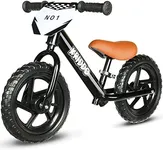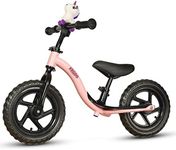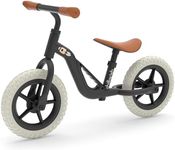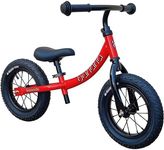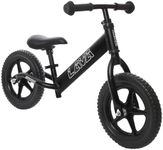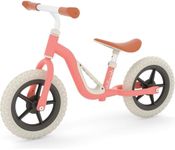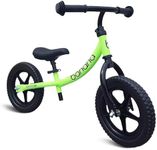Buying Guide for the Best Balance Bikes
Choosing the right balance bike for your child is an important decision that can help them develop their motor skills and confidence. Balance bikes are designed to teach children how to balance and steer before they transition to a pedal bike. When selecting a balance bike, consider the following key specifications to ensure you pick the best fit for your child.SizeThe size of the balance bike is crucial because it needs to be appropriate for your child's height and leg length. Balance bikes typically come in different wheel sizes, ranging from 10 inches to 16 inches. A bike that is too big or too small can make it difficult for your child to ride comfortably and safely. To choose the right size, measure your child's inseam and compare it to the bike's seat height. The seat height should be about 1 inch less than your child's inseam to allow them to sit comfortably with their feet flat on the ground.
WeightThe weight of the balance bike is important because a lighter bike is easier for young children to handle and maneuver. Balance bikes can range from around 6 pounds to over 10 pounds. For very young or smaller children, a lighter bike is generally better as it will be easier for them to control. As your child grows and becomes more confident, they may be able to handle a slightly heavier bike. Consider your child's strength and ability when choosing the weight of the bike.
Frame MaterialBalance bikes are made from various materials, including wood, metal, and plastic. Each material has its own advantages. Wooden bikes are eco-friendly and have a classic look, but they may not be as durable as metal bikes. Metal bikes, often made from aluminum or steel, are sturdy and long-lasting, but they can be heavier. Plastic bikes are lightweight and often more affordable, but they may not be as durable. Consider the durability, weight, and aesthetic preferences when choosing the frame material.
AdjustabilityAdjustability refers to the ability to change the height of the seat and handlebars as your child grows. This feature is important because it allows the bike to grow with your child, providing a longer period of use. Look for bikes with easily adjustable seats and handlebars. Some bikes have quick-release clamps that make adjustments simple and fast. Ensure that the bike can be adjusted to fit your child comfortably now and in the future.
TiresBalance bikes come with different types of tires, including air-filled (pneumatic) tires, foam tires, and solid rubber tires. Pneumatic tires provide better traction and a smoother ride, especially on uneven surfaces, but they require maintenance and can get punctured. Foam tires are lightweight and maintenance-free, but they may not offer as much grip. Solid rubber tires are durable and maintenance-free, but they can be heavier and less comfortable. Consider where your child will be riding the bike and choose the tire type that best suits those conditions.
BrakesSome balance bikes come with brakes, while others do not. Brakes can be a useful feature for older or more advanced riders who are ready to learn how to stop using hand brakes. However, very young children may not have the coordination to use brakes effectively and can stop by using their feet. If you choose a bike with brakes, ensure they are easy for your child to reach and operate. Consider your child's age and skill level when deciding whether brakes are necessary.

